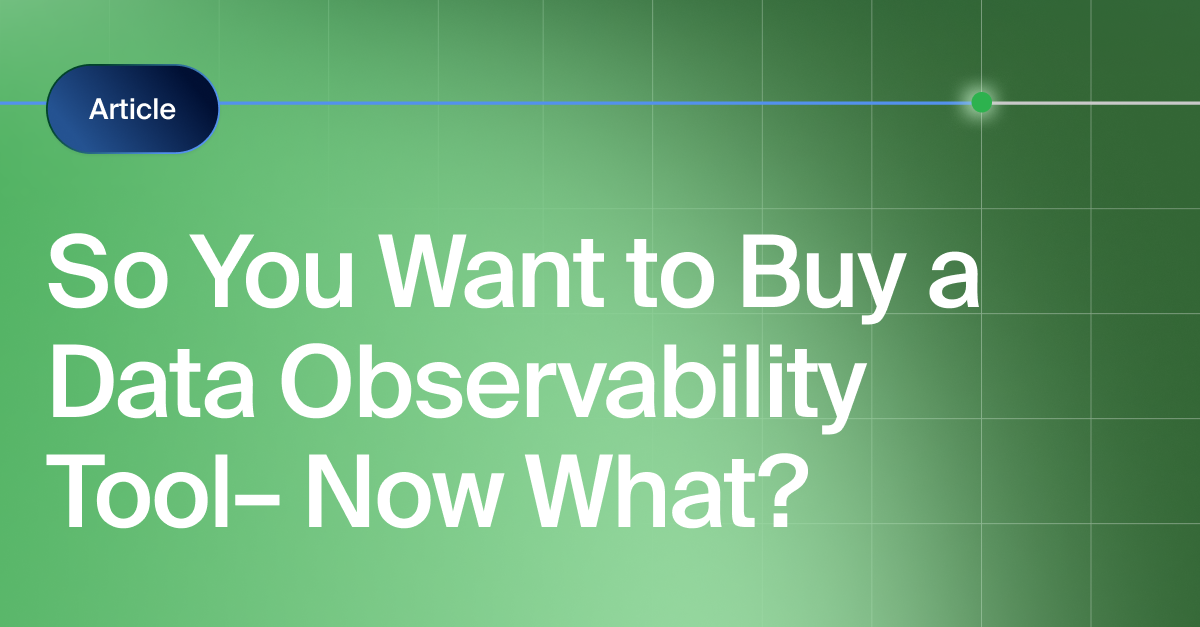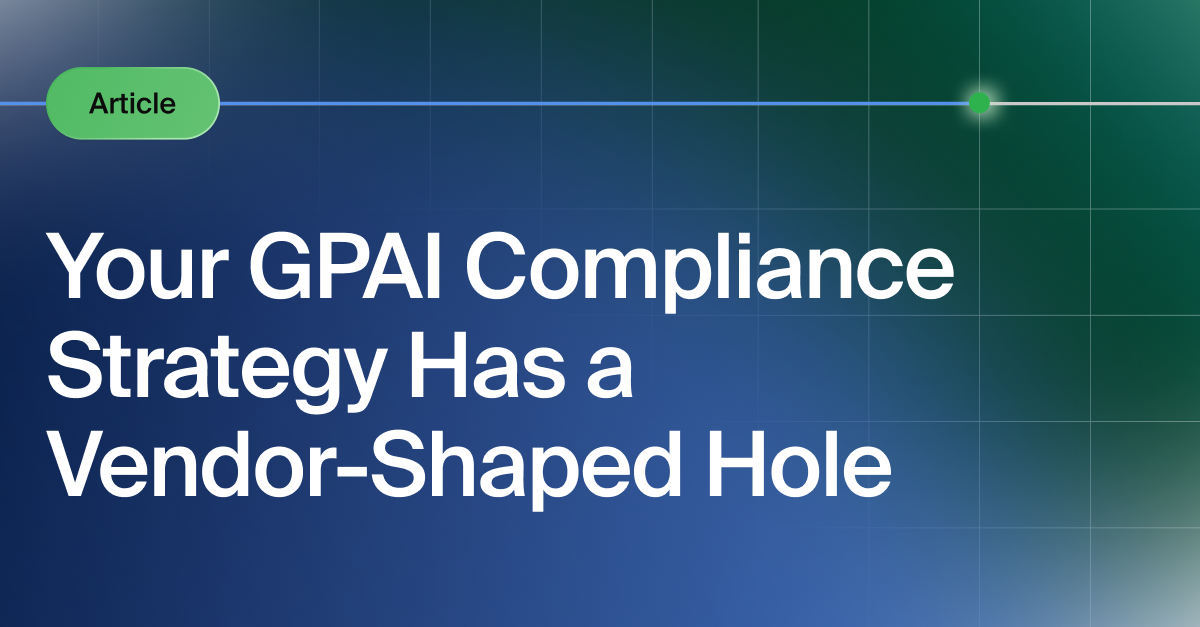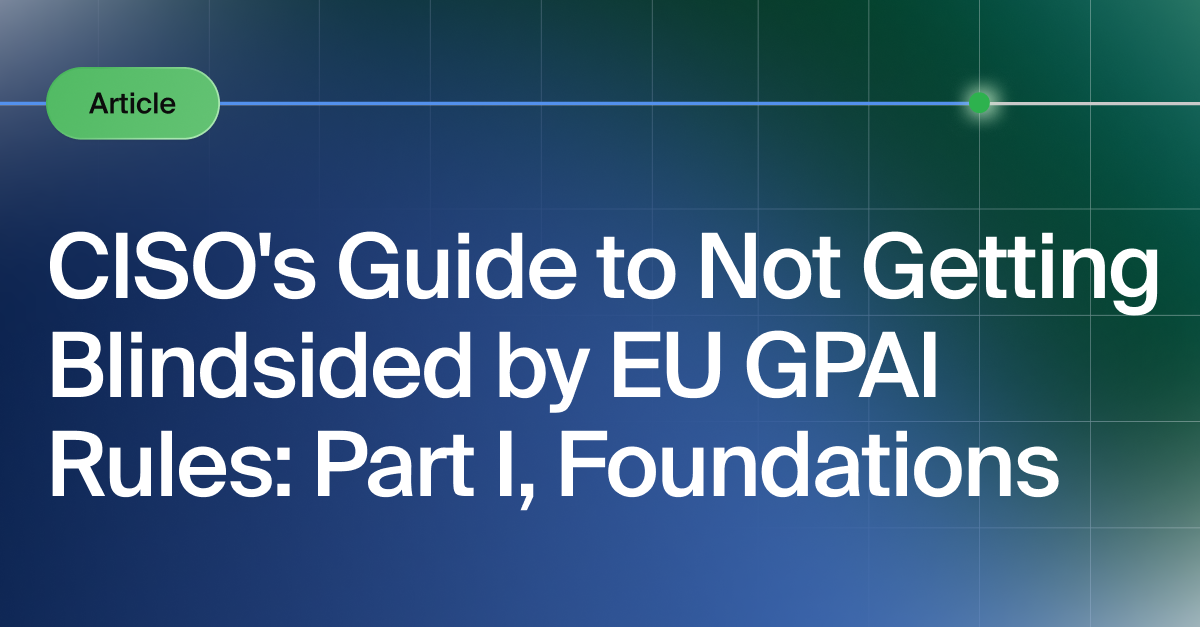Get the Best of Data Leadership
Stay Informed
Get Data Insights Delivered
Here Are 5 Things to Consider Before You Do...
You’ve done the homework. You know your team needs data observability. You’ve gotten the buy in, and a green light for the budget. You’re ready to buy.
But getting budget approval or picking a favorite vendor isn’t the finish line. It’s the beginning of a long-term partnership with real implications for your architecture, security, and day-to-day workflows. And while the vendor landscape looks crowded, not every solution is built for the realities of your stack or the pace your business runs at.
Let’s cover the considerations that matter once you’re past the research phase: what to ask, what to watch for, and how to avoid the common pitfalls that can turn a great-looking platform into a frustrating implementation.
1. Get Clear on Success (and Failure) Criteria
By the time you're seriously evaluating vendors, you should have a shortlist of relevant options. And a shortlist is a great start. But a clear plan for proof-of-concept (POC) testing with defined success and rejection criteria is essential.
Instead of letting a vendor dictate what "success" looks like, your team should define what matters most to your use case. That might include:
- The ability to monitor critical pipelines
- Custom alerting configurations
- Low latency and high reliability
- How easy it is to use and scale the platform
Knowing what "failure" looks like is just as important. This can help you move quickly and decisively through the POC process.
2. Know What Happens to Your Data
What data is the observability platform collecting? Where is it stored? How is it used?
These questions have real implications for privacy, compliance, and your organization's risk factors, especially if the platform uses your data to train machine learning models.
Before signing a contract, make sure you understand:
- What data is collected, retained, and why
- Where that data is stored
- Whether it's used in any ML training pipelines
- How the vendor handles privacy, encryption, and compliance with regulations like GDPR or CCPA
3. Evaluate Fit, Not Just Features
Plenty of observability platforms offer impressive features. But if the tool doesn't align with your architecture and deployment requirements, those features won't matter much.
Ask questions like:
- Can this tool be deployed in a way that meets our enterprise requirements (e.g., VPC, on-prem, hybrid cloud)?
- How does it handle monitoring at scale?
- Is the underlying architecture built for flexibility, or will we have to work around it?
- Does it support schema drift detection and latency monitoring out of the box?
In enterprise environments, deployment methodology and architectural compatibility are often make-or-break factors.
4. Integration and Extensibility Matter
No data observability platform exists in a vacuum. It needs to integrate with your existing data stack, workflows, and toolchain.
Look for platforms that:
- Seamlessly integrate with your orchestration, ETL, and analytics tools
- Offer APIs and SDKs for deeper customization
- Support data formats and frameworks your team already relies on
The fewer manual workarounds your team has to build, the better.
5. Understand the Pricing Model
Vendor pricing can vary widely. Some charge based on volume, others on compute, users, or data sources. It adds up quickly and if you’re not careful, it can create unexpected friction down the line.
Ask vendors to walk you through:
- How pricing scales with usage, teams, and infrastructure
- Whether there are hidden costs (e.g., overage fees, support tiers)
- What licensing model is offered (e.g., annual, monthly, consumption-based)
- What limits apply to your POC environment vs. a full deployment
The goal is to find a pricing model that aligns with both your current needs and your growth.
At the end of the day, the best observability platform is the one that works for your data, your architecture, and your team. Not the one with the flashiest demo or longest feature list.
Take the time to understand what you really need, and what you don’t. Ask the hard questions. And don’t just buy a tool; invest in something that will make your team faster, more reliable, and more confident in their data.
Monitoring
Schema change detection
Lineage monitoring





.png)
.jpeg)

